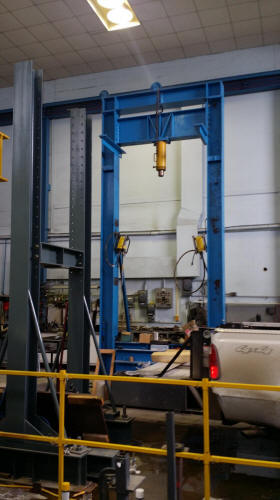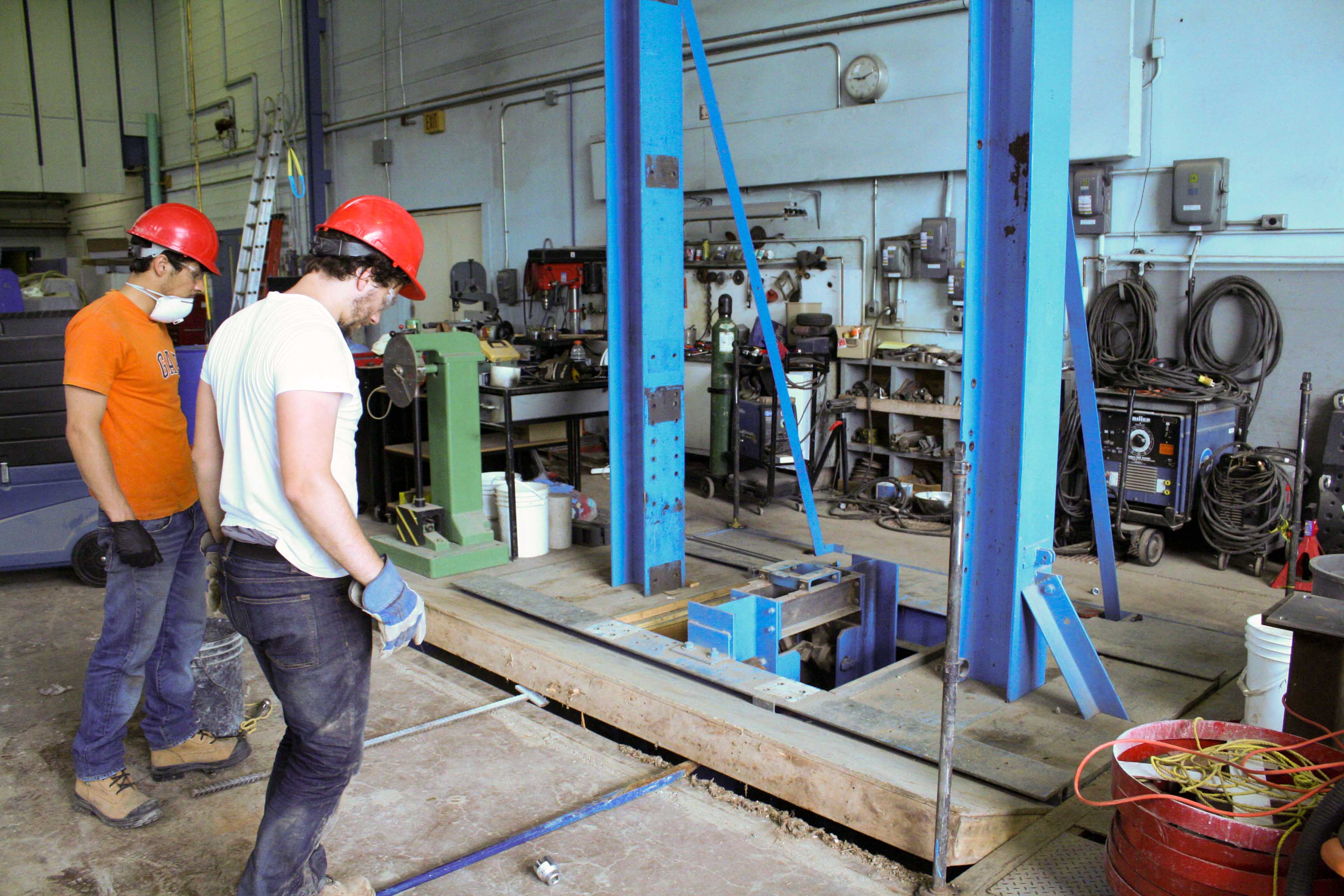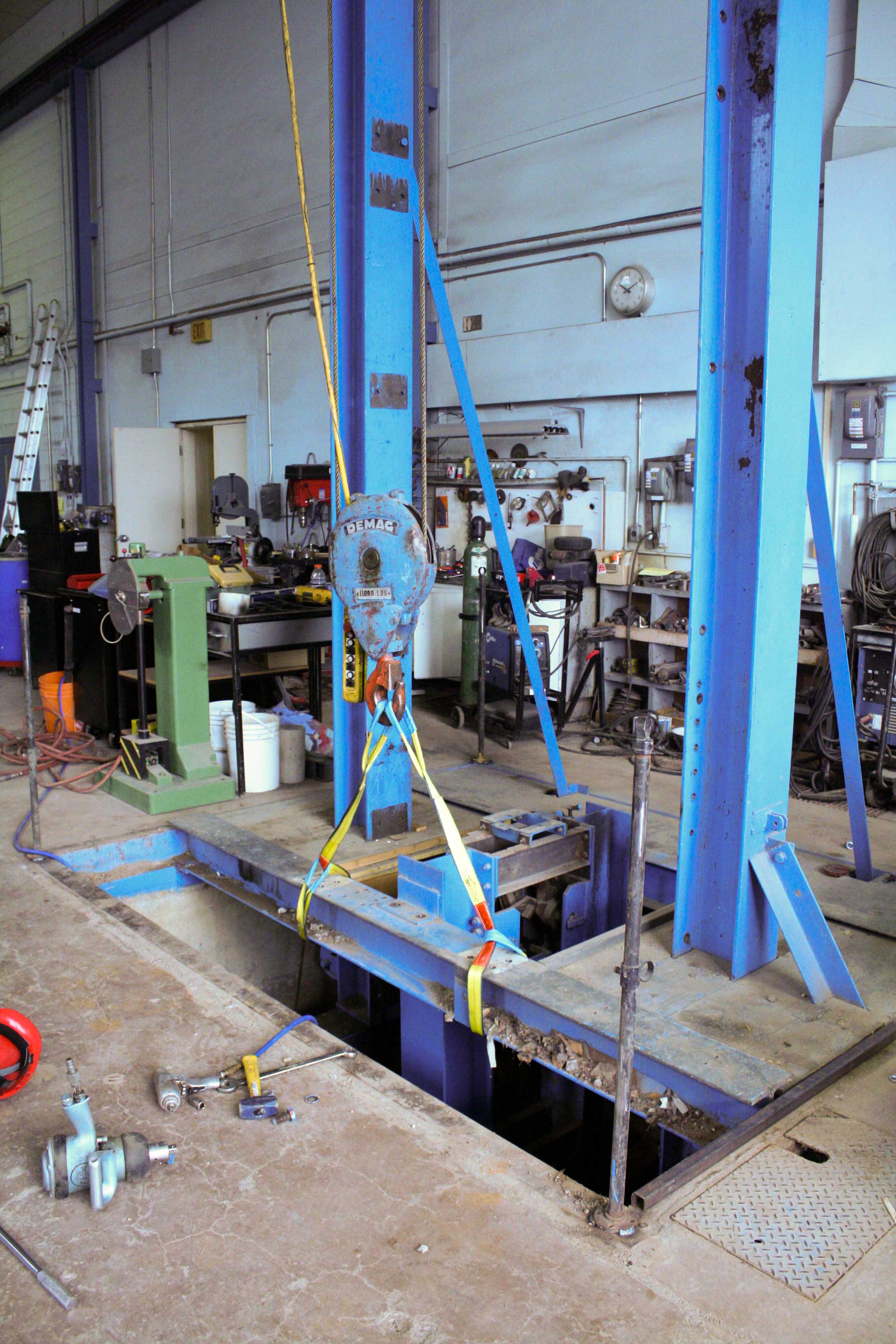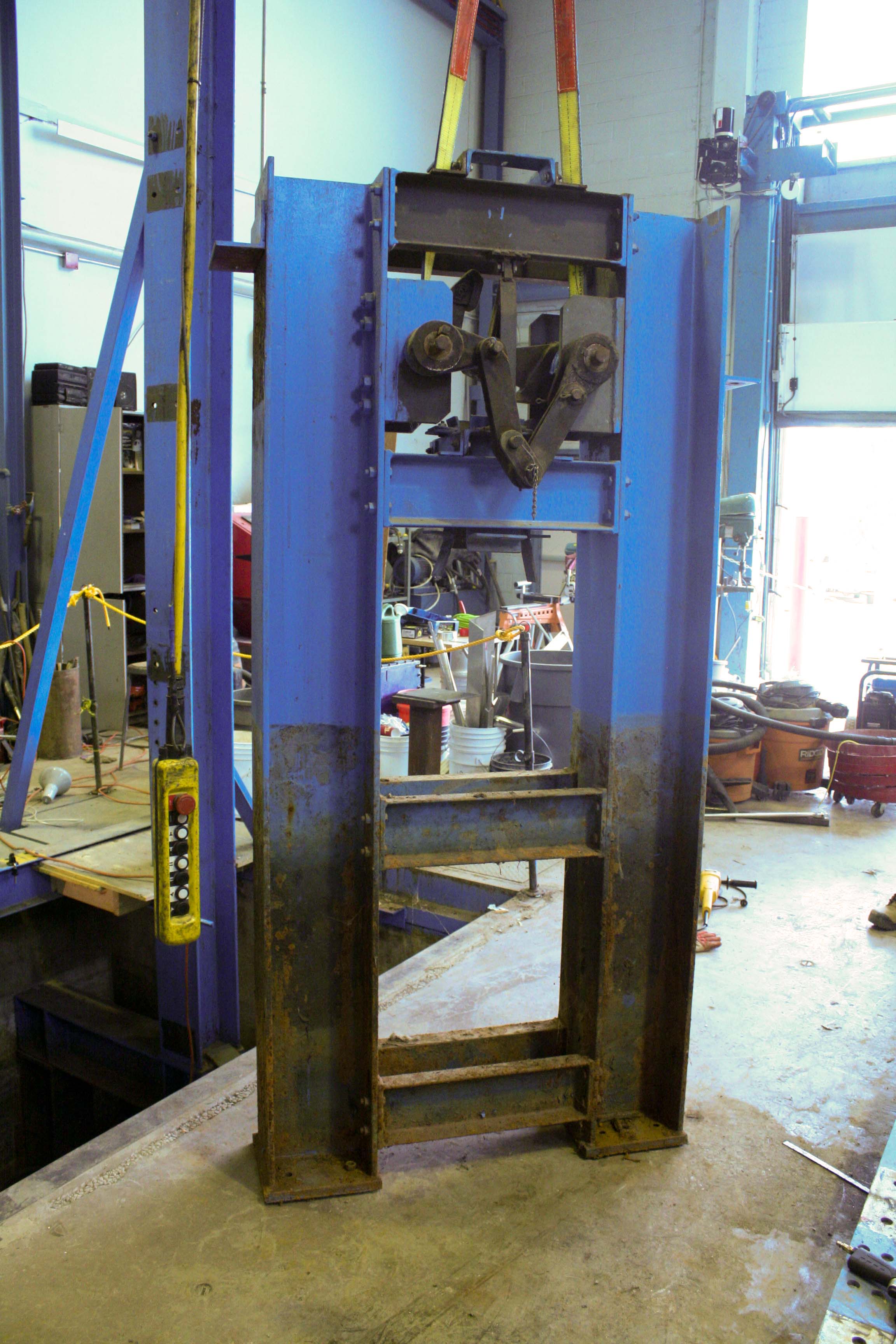 |
Alan Lloyd Assistant Professor Ph.D. |
|
|
Structural Engineering |
||
| Home | Biography | Research | Students | Teaching | Contact |
 |
Alan Lloyd Assistant Professor Ph.D. |
|
|
Structural Engineering |
||
| Home | Biography | Research | Students | Teaching | Contact |
| Drop Mass Impact Test Facility | ||
| The Structural Engineering
Laboratory at UNB had a frame installed that once was used to drop heavy
timbers to test brakes for mine shaft elevators. The frame was
repurposed into a self-reacting frame (one that does not load against
the floor) for some light duty cold formed steel stud testing. It has
largely sat unused for a number of years. It is being repurposed into a
drop mass testing frame to test impact loads on structural and
non-structural components and systems. The goal is to have a frame capable of dropping up to 1000kg of mass from a maximum height of approximately 5 meters. In the future, the frame may be converted to an accelerated drop mass frame by adding spring or pneumatic loads to the mass to accelerate its initial descent. The work to repurpose the frame began in July, 2015 and is outlined here. |
||
| Initial State of the Frame | ||
 |
 |
These images show the initial state of the frame (blue)
and its surrounding environment. The spanner beams that were used in the
loading for the self-reacting frame are still in place. In the image in
the left, the top beam is visible and it still has a jack mounted. The
bottom beam is barely visible in the left image. Both of these beams
will have to be removed in the modification of the frame. In the side view image (right), the floor of the lab around the frame is visible. It is actually a plywood floor that covers an approximately 2.2m deep pit. To the right of the frame is the strong floor, to the left is slab on grade. The floor system, and the existing steel test frame below, has to be removed and modified for impact testing. The general area around the frame itself has been used for miscellaneous storage over the years. This area will have to be repurposed to a test area and properly cleaned. |
| Removal of Floor | ||
 |
The floor covering the pit needed to be removed. This floor was difficult to get out as it was built around, and to fit into, the various steel sections comprising the existing test setup. | |
| Disassembeling of Existing Test Supports | ||
 |
 |
|
| The lateral support beams holding the top of the arrestor assembly in place and the anchor bolts at the base of the assembly were removed. | ||
| Removal of Existing Test Mechanism | ||
 |
 |
|
| The old test assembly is removed from the pit. The dogs that would catch the timbers are visible at the top of the assembly. At one time the pit had water up to about 1.5m deep ad the high water mark is clearly visible on the test assembly. Although it is interesting, everything but the vertical W sections are to be recycled. | ||
| Removal of Old Guids and Drop Mass | ||
 |
 |
|
| The solid steel guides (4" diameter) and the drop mass were both in very rough condition. There was no point in trying to save the guides, but the drop mass would be reconditioned and modified for the new setup. The mass itself is made from 2" thick mild steel plates on a 2" thick steel sled. It has a total mass of just over 1000kg which makes it perfect for the new setup. | ||
| Disassembling old Drop Mass | ||
 |
 |
|
| Removal of the fasteners was difficult due to the corrosion, but possible with a 36" pipe wrench (left). The cruciform steel section that hold the mass plates in place is visible once the lift point cross bars were removed (top). | ||
| Cleaning and Painting of Drop Mass Plates | ||
 |
 |
|
| All the plates were removed from the assembled mass and pressure washed then cleaned with a wire cup on a grinder. The sled post pressure washing and prior to painting is shown on top white individual plates are on the left. A bright yellow rust paint was used for the drop mass colour. | ||